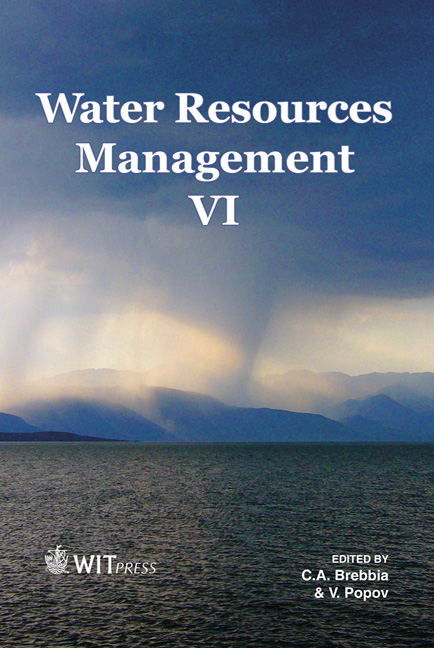Modelling Of Groundwater Contamination By Landfill Leachate
Price
Free (open access)
Transaction
Volume
145
Pages
12
Page Range
459 - 470
Published
2011
Size
827 kb
Paper DOI
10.2495/WRM110401
Copyright
WIT Press
Author(s)
S. Top, G. Varank, A. Demir, E. Sekman & M. S. Bilgili
Abstract
The objective of this study is to investigate the transport of phenolic compounds existing in leachate through landfill liner systems by assessing the groundwater quality. Four identical pilot-scale landfill reactors with different alternative composite liners (2 mm high-density polyethylene (HDPE) geomembrane, 10 + 10 cm compacted clay, 2-cm-thick bentonite and 10 + 10 cm compacted clay liner (CCL), 2-cm-thick zeolite and 10 + 10 cm CCL) were simultaneously operated for a period of about 540 days for this purpose. Wastes representing Istanbul municipal solid wastes were disposed in the reactors. To represent bioreactor landfills, reactors were operated by leachate recirculation. Phenolic compounds of leachate were analyzed by using Gas Chromatograph. The change of phenolic compounds concentration in groundwater samples were modeled by using modified Gompertz equation. Keywords: modelling, leachate, phenolic compounds, groundwater contamination. 1 Introduction Leachates from municipal solid waste (MSW) landfills and various discarded products contain a wide mixture of chemical pollutants as dissolved organic matter; inorganic macro components; heavy metals; xenobiotic organic compounds [1]. The issue of xenobiotic organic compounds (XOCs) in landfill leachates have been addressed in a number of studies [1–6]. The XOCs include a variety of aromatic hydrocarbons, phenols, chlorinated aliphatics, pesticides, and plastizers. Among them, phenol is the precursor to the synthesis of many organic compounds and is of high concern because of potential toxicity [7]. Phenol and
Keywords
modelling, leachate, phenolic compounds, groundwater contamination





